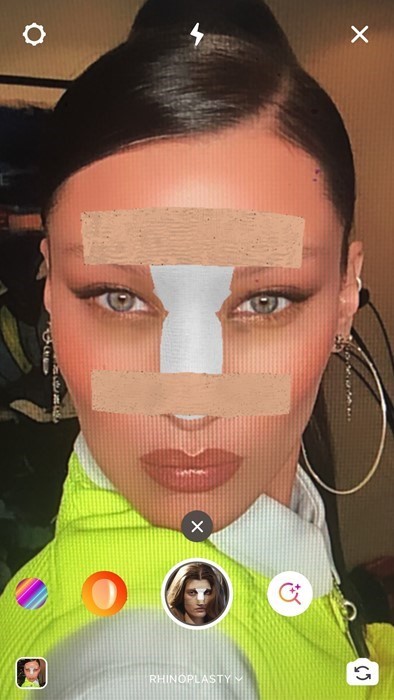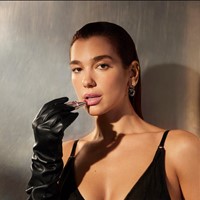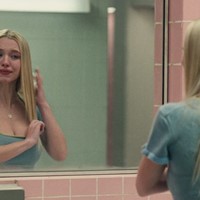TikTok filters are more realistic than ever, showing us what we could look like with a few simple tweaks – and this is increasingly impacting what cosmetic procedures we’re seeking out
We have come a long way since the dog-eared and rainbow-vomiting filters of Snapchat. In 2024, they have been replaced by increasingly realistic and face-altering ones that smooth out your pores, enlarge lips, contour your nose and reshape your jaw. On TikTok, AI filters like ‘Bold Glamour’ and ‘Teenage Look’ are insidiously realistic, transforming your face pixel by pixel in a way that is almost undetectable. And recently, we’ve seen a new wave of filters; ones that “test” and give value to certain physical standards.
You have probably seen a few come across your feed: low v high visual weight refers to whether lighter or heavier make-up is more “flattering” based on facial feature size. The .33 facial ratio filter refers to the “ideal” proportions of facial features. The canthal tilt filter measures the angle of an eye’s upward or downward tilt, going hand in hand with celebrities like Kendall Jenner and Bella Hadid, whose features have popularised eyebrow lifts and “fox brows” to achieve a “higher tilt”.
Since the beginning of filters, these digital transformations have jumped off the screen and had substantial real-world impacts. In 2018, Dr Tijion Esho coined the term ‘Snapchat dysmorphia’ after noticing that his patients were increasingly bringing in photos of their own faces subtly (or not so subtly) altered by Snapchat filters instead of pictures of celebrities, which is what they’d done before. In the six years since, the technology has only become more realistic and widespread. So how is the new generation of TikTok filters influencing and impacting plastic surgery trends?
Firstly, these filters are driving an increased awareness of physical terminology, turning complex procedures into neatly packaged and marketable requests that people can bring to their plastic surgeons or beauticians. Dr Lee, a board-certified plastic surgeon and the CEO of Wave Plastic Surgery, says that many of these measuring filters “are analytical tools that plastic surgeons have been using for decades. TikTok, in its never-ending quest for novelty, will appropriate these, and flag them to its viewers for a period of time, before moving on to the next thing.”
Dr Devine, a plastic surgeon and the founder of Carriages of Harley Street, echoes this opinion, saying that TikTok has yet to achieve ultimate AI-predictive accuracy in terms of correctly predicting how a procedure will actually turn out – though filters are certainly moving in that direction. The most popular filters usually alter lips, reflecting one of the most popular tweakment trends of the past five years. In cases of viral trends, these filters also usually become misappropriated, attaching subjective and uninformed standards to their results. Users might be more inclined to view their own faces negatively and seek out procedures if they don’t “pass” a filter’s test – maybe their jaw is .1 off from the .33 ratio, leading them to seek out trendy procedures like jaw filler, even if they aren’t necessarily the right fit for them.
Dr Devine agrees these “ideal” facial ratios, which can be augmented or corrected by something like fillers, can lead to unhealthy self-image. Social media can also trivialise the seriousness of these procedures or peddle misinformation, with Dr Devine saying they “are sometimes poorly consented and not properly informed of all the serious risks involved. Ultimately these are medical treatments and they should be respected as such”.
Ian Michael Crumm, the celebrity esthetician and co-host of the BeautyCurious Podcast, agrees that these filters “often portray unattainable standards of beauty”, and references the popularity of the poreless beauty filter, which promotes something that is not physically possible.
@nastya.jung Ok :( was close tho… #fyp #33filter #xzyabc ♬ son original - FYP 🤍🇲🇺
Dr Lee says he, among many other plastic surgeons and aestheticians, has noticed an uptick in people using filters as reference images for non-invasive procedures. Kaylyn Plum, an NCCPA nationally board-certified physician assistant and co-founder of Ratio NYC, has not had patients request a specific TikTok filter as a request but notes, “I do think it’s increasing awareness of the micro-adjustments you can make because there are these filters where people can be like, ‘Hey, I look better in this, and why is that?’” After the release of the Barbie movie, she also noticed there was a large uptick in patients requesting “Barbie Botox”, which is Botox injected into the trap muscles to debulk shoulders and elongate the neck. This procedure, or other re-labelled procedures, like jaw-slim (masseter Botox), aren’t new, but got marketed and packaged in combination with other online trends, peaking the request’s popularity.
Increased filter awareness has also encouraged younger patients to begin “preventative” or anti-ageing care (this is probably because filters can now supposedly show people what they will look like over the next 50 years). Between TikTok and celebrities being more open about procedures, Plum says that barriers are being “broken down” for a lot of this generation, and says that most of her patients are between the ages of 18 and 30. She also explains that a lot of these patients are now willing to go under the knife for larger surgeries down the line, like a blepharoplasty (upper eye-lift), at earlier ages than before.
Non-invasive and anti-ageing procedures are at an all-time high, with a 19 per cent increase in plastic surgery and 26.2 million non-invasive procedures, such as lip fillers and botox, performed in the United States last year alone. This, combined with the popularity of TikTok and social media, and the increasingly advanced technology of filters, suggests a growing symbiotic relationship between social media filters and cosmetic procedures. Because of this, now, more than ever before, all four practitioners, Lee, Crumm, Devine, and Plum, emphasise that educating patients past what they’ve seen on a TikTok filter is of the utmost importance for a surgeon or esthetician to ensure a healthy and happy outcome.




